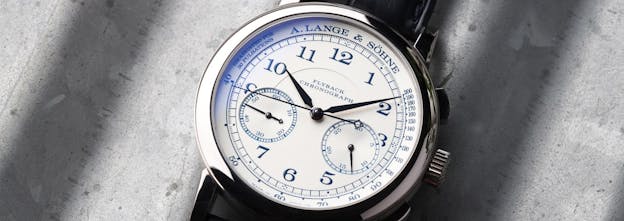The Lange 1815: A Complete History
Tradition: A cliché word for the watches perhaps, and sometimes, even an overused alibi to cover up a lack of creativity. Yet it is undeniable that tradition, the past, is the backbone of the watch industry. Watchmaking is a craft that is still infused with principles that are centuries old, and we are nostalgic by nature and drawn to what connects us with the past. Indeed, it is an inseparable element of the craft we all adore – even the most avant-garde craftsmen and companies, whether MB&F, De Bethune, or Richard Mille, still remain grounded in and aware of tradition. It is there. The question is, how to express that connection? Some companies acknowledge the past by breaking with it, but others take the past and bring it into the present. A. Lange & Söhne is the latter, and the 1815 Collection is the embodiment of the brand’s 175 years-long past.
Since its re-birth in 1995, the 1815 Collection – named after Ferdinand Adolph Lange’s birthyear – has become the template of both some of the most traditional and exquisite pieces of the brand. In this article, we are going to take a journey, and witness the evolution of the collection from its inspiration to this day.

Glashütte’s watchmaking history starts with Ferdinand Adolph Lange. A prodigy, he learned watchmaking at the Technical University of Dresden, under the court watchmaker who installed the famous 5-minute jumping hours clock at the Dresden Semper Opera house: Johann Christian Friedrich Gutkaes, and later many others such as Winnerl and John Arnold.
With his ambitious business plan to revive Glashütte, once a rich mining region which fell into poverty, Lange won the Saxon king’s 7800 thaler support and opened the first watchmaking atelier in Glashütte with 15 basket-weavers. Glashütte was so out of the watchmaking map, the first pocket watches would be either non-branded on the dial side or would be marked as “Glashütte bei (in/at) Dresden”.
It took decades, numerous trials and patents for the watchmakers and artisans from Glashütte to come up with what we can call a mature work. (You can read more about it at, here) Finally, around the 1870s, the hallmark design emerged. On the dial side, it would feature Arabic Numerals, a rail-way minute track, stunning hands, three-dots on each quarter inspired from the Saxon porcelains, and a multi-layered dial. Turning the pocket watch and opening the cover would reveal the classic Glashütte movement: a three-quarter plate, hand-engraved balance cock, blued screws, and famous gold chatons.

The design would lay the foundation for almost every pocket watch made in Glashütte, until the demise of watchmaking in Glashütte at the end of WWII. This is the base for everything we see in the A. Lange & Söhne 1815 collection, tangibly connecting A. Lange & Söhne to its roots and gives us a chance to hold the essence of German watchmaking.
Modernity
However, a modern watchmaking house cannot solely replicate tradition. Some do, and even further there are those who just replicate famous vintage designs under a different brand name – but not A. Lange & Söhne. On the night of the launch of the 1994 collection, Günter Blümlein said to noted German watch journalist and expert Gisbert Brunner, “It is not our intention to celebrate only traditional craftsmanship or to participate in the race for the most complicated watch. Our goals are watchmaking beauty and craftsmanship perfection,” – making it clear that the brand is here to respect tradition, but also to expand its boundaries.
1815 Time Only Collection (Three generations. 1995 – 2008, 2009 – 2015, 2015-)
The launch of the 1994 collection was noteworthy. Not only because the most storied name in German watchmaking was reborn, but also due to the unusual, fresh character of the new collection. Each one of the pieces showcases the brand’s modern face, with both unusual lines like Lange 1, Arkade and Saxonia, and also with one-of-a-kind examples of watchmaking prowess like the Tourbillon Pour le Mérite. What was lacking, however, was a truly classic face, something that would reflect A. Lange & Söhne’s 19th century spirit today. Thus, we witnessed the birth of the 1815 collection a year later, in 1995.

A brief look at the details of the 1815 Collection reveals its inspiration in classic Lange pocket watches. Yet, it is much more than just an adaptation. The custom-cut typeface brings a modern character to the familiar template. The curve of the logo, the brilliantly done ampersand and the curve of the numerals, brings 150 years of Lange history into modernity. The sub-seconds dial is given concentric circles, bringing a much-needed additional detail to the subtle dial.
Turn the 1815 over, and the purest A. Lange & Söhne caliber of its time, and even to this day, greets us: the L941.1. It is a miniature Glashütte pocket watch movement, in my opinion, punching significantly above its weight with its finish, details and character. On the top, the German silver three-quarter plate beautifully executed stripes greets us. A bit further, we see the gold blued screws, holding the gold chatons. The hand engraved balance showcases the talent of the artisans, carrying the screwed-rim balance. Everything is exactly how it was done a century ago, only a bit more modernized, precise, and dare I say beautiful..
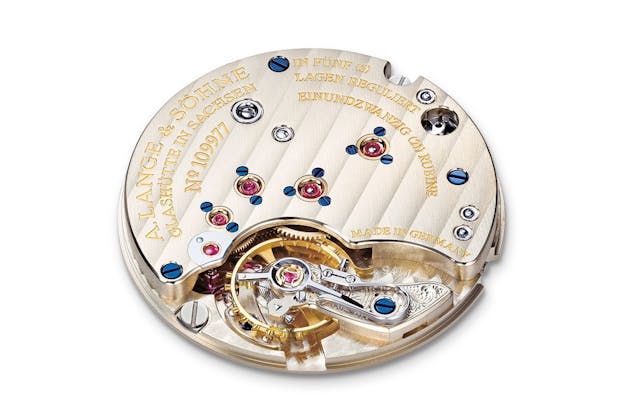
The first generation of the 1815 collection came in 35.9 mm in diameter and 7.5 mm in thickness. The case is built in the classic A. Lange & Söhne fashion on three-steps with alternating finish (except pink gold). The collection was mainly offered in the following combinations:
- 206.021: Yellow gold / champagne dial
- 206.025: Platinum / silver dial
- 206.027: White gold / blue dial
- 206.029: White gold / black dial
- 206.032: Pink gold / silver dial
The second generation of the 1815 time-only collection arrived 13 years later in 2009. Larger watches were growing in popularity, and 36 mm was not viable anymore for many men. With the update, the 1815 Collection grew to 40 mm in diameter, with a new in-house movement to adapt to the bigger size.
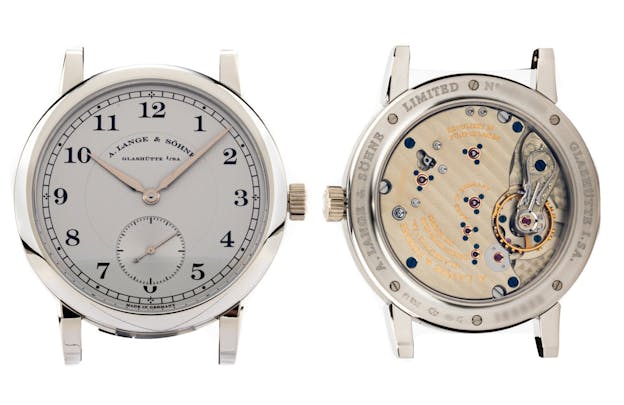
One of the biggest updates to the second generation 1815 is the layered dial, which is a reminder of the early pocket watches. The hands are broader and more masculine to accompany the growing diameter and thickness.
It is also important to note here that the second generation brought us two charming special editions. In 2015, A. Lange & Söhne introduced the “Homage to 200th Anniversary of Ferdinand Lange” in celebration of the 200th birthday of the founder. The pieces came in platinum with an irresistible black dial (236.049) and in honey gold case with an egg-shell colored, grained dial (236.050) each limited to 200 pieces.
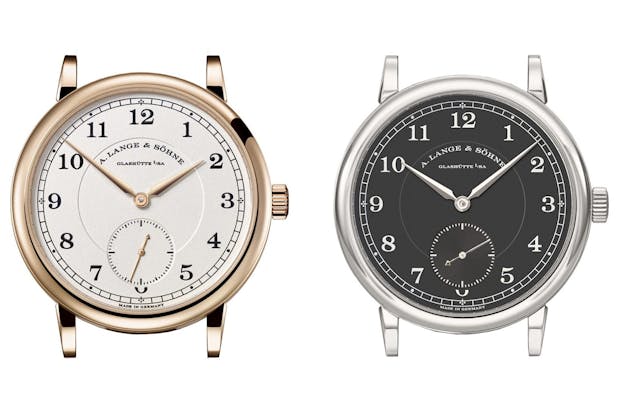
The second generation of the 1815 Collection at 40 mm did not enjoy the longevity of its predecessor, and the collection was revamped once again in 2014. We’re going to see that this is quite a common occurrence in the collection, which tells us that the brand was constantly trying to find the sweet spot both in terms of size and design, and in my humble opinion, the current collection just nails it.
The third 1815 generation came in 38.5 mm diameter.
There are two important updates coming with the new collection.
On the dial side, we see that the “Made in Germany” text was moved towards the sides of the “eaten” numeral 6 from the previous bottom of the minute-track. With the space open, the minute-track was pushed more towards the edge, giving the dial more space overall.
The second update is the case. An update we see in the whole 1815 collection in the mid 2010s, the bezel is now stepped and more rounded, delivering a thinner silhouette and a delightful detail.
1815 Up/Down (Two generations 1997 – 2008, 2013 – to present)
In 1997, we were blessed with the 1815 Up/Down. This brought us not only a characteristic design update, but a patent from the olden days of the brand. Indeed, the Up/Down indication was inspired from a patent number 9349 (read more, here). The famous Auf/Ab indication was utilized in numerous pocket watches through many decades, and what other collection is more suitable to honor such an important part of the brand’s history?

The 1815 Up/Down is important not just because of the revival of such a historic element, but also due to its characteristic design. The below-the-horizontal-centerline placement of the sub-dials laid the foundation for many upcoming complications of the family, creating a visual signature for the overall collection.
The first generation also measures at 35.9 mm but at slightly thicker 7.9 mm. Apart from the special editions made for Walter Lange, we see four different references in the first generation:
- 221.021
- 221.025
- 221.027
- 221.032
The first generation stayed in production up until 2008, except the blue dial which was discontinued around 2002. The second generation was introduced five years later, in 2013, and just like the base model, and many other 1815 collection pieces, it received a size, movement and an overall design update.
On the front, the first change we notice is the bigger sub-dials. We saw the same effect with the 2010’s 1815 Chronograph as well, which tells us that the clarity and legibility was one of the brand’s focus points during the 2010s. The red marker on the power reserve brings a new accent to the dial, departing further from the first generation’s monochrome look.
On the case, again, we see the stepped bezel, which was first introduced with the base model – a welcome accent to the now 39.5 mm case size.

With the new collection comes the a movement and the caliber L051.2 is a brilliant update over the existing caliber. In addition to the usual brilliant finish, characteristic architecture, chatons, blued screws, etc. this time we’re greeted with exposed ratchet wheels – a fantastic touch that matches the watch’s complication very well.
Overall, a delightful update and this collection seems to be in fine hands. I am often asked what the best entry to A. Lange & Söhne is. If your budget is below $30k, and you are a fan of classic designs, I cannot think of a better choice from the brand that is classical, historic, and with a bit more going on than the base model.
2004 however, in my opinion, gifted us the best piece of the 1815 collection.
1815 Chronograph (Three generations. 2004 – 2008, 2010 – 2014, 2015 -)
By utilizing the marvelous engine running the Datograph, the 1815 Chronograph made a formidable debut – even though it was introduced next to the one-of-a-kind Double Split. However, it is not only what is inside that makes this one such a conversation piece. Just like its beating heart, the collection brought a taste of German watchmaking design with its distinct details. It had lovers, it had haters, and exactly because of that, it is valuable.
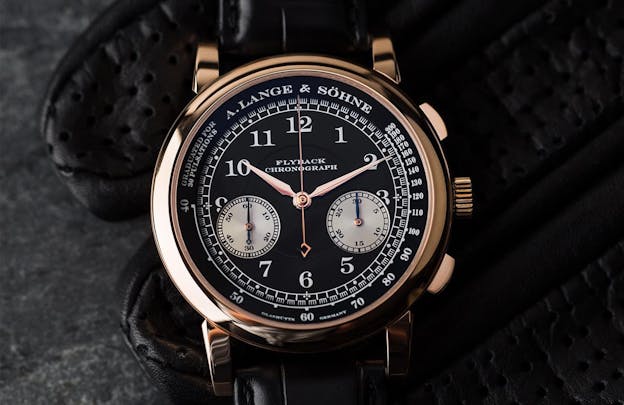
With a case measuring at a delightful 39.5 x 10.8 mm, in comparison to the Datograph, the collection brought a significant improvement in wearability. The case construction is as usual three-steps with alternating finish and enhanced with buttery-smooth pushers and just the right crown size.
The dial is constructed in four layers. The angled pulsometer scale on the periphery of the dial brings out a delightful three-dimensionality. The m-shaped hashmarks match every tick of the balance. A step down, we transition to the hour/minutes scale. The center portion of the dial is further recessed, as dictated by tradition. The chronograph minutes and running seconds scale reside the furthest with a concentric circle finish and create a much-needed contrast.
The sub-dials are placed below the center, which we can remember from the 1815 Up / Down and the 1815 Moonphase collections.
Such placement is due to the utilization of the caliber from the Datograph. 1815 Chronograph collection works on the caliber L951.0, the most basic, no-date version of the movement. A movement that is deemed to be one of the finest chronograph calibers ever made (Langepedia documents here how it works). L951 is the view that got me into watchmaking. It is so beautiful that it’s like a cheat-code to seduce your non-watch friends into our dangerous hobby.

Following four short years in production, the first generation was discontinued in 2008 and as a part of the design overhaul process, was re-introduced in 2010 with a much simpler façade – , possibly to address a different crowd that could not be captured with the first generation. And I must admit, it succeeded in its endeavor.
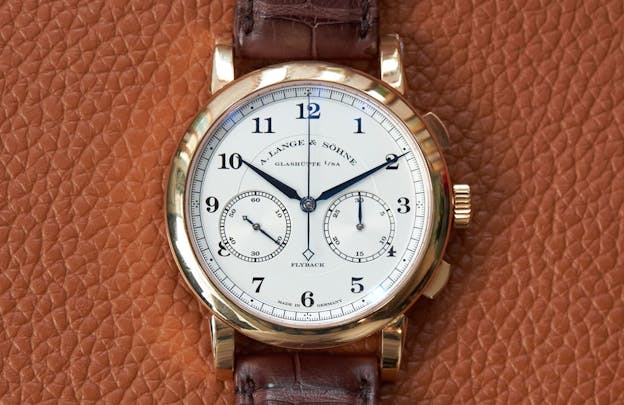
The movement was also overhauled, upgraded to L951.5. The new caliber has a 60 hours power reserve (previously 36) and a balance wheel with eccentric poising weights (previously screwed, as tradition dictated). Until today, the 1815 Chronograph is the first and only 1815 collection model to house a non-screwed balance wheel.
Alas, after another four short years, the second generation of the collection was discontinued in 2014. Only a year after, A. Lange & Söhne introduced the third generation with a bomb: the 1815 Chronograph Boutique Edition. A merge of the best of both worlds.
The third generation marked the return of the dearly missed pulsometer scale and combined such an important element with the dial clarity of its predecessor. The success of the Boutique Edition led the way to three more editions, and two unique pieces.
The unique piece in white gold with panda dial, auctioned by Phillips in Association with Bacs & Russo on November 6th Geneva, sold for more than $1 million. The resemblance to the reference 401.031 is uncanny, in my opinion, the most eccentric piece of the collection.

1815 Automatik (2004 – 2008)
Next to the 1815 Chronograph, the year 2004 came with a surprise from A. Lange & Söhne, a contradictory one: the 1815 Automatik. Very similar to the classic 1815 collection from the front, the surprise was on the movement side: a self-winding movement powering a traditionally rooted collection piece. For some collectors it was sacrilege. Just to give a measure, even the introduction of an eccentric-weight balance wheel to an 1815 chronograph (in 2010) caused a slight uproar, so, imagine this one.

The watch was powered by the finest automatic caliber of the brand, the Sax-0-Mat with its solid-gold and deeply engraved rotor, platinum winding mass, and the zero-reset mechanism. Alas, even such magnificence couldn’t bring joy to the religious-like collector group of the brand and only after four years, the collection was discontinued.
I think that such quirk offers tremendous collectability, not to mention the relative rarity of the reference.
Tourbograph (2005)
I must apologize for cheating for the first piece of the 1815 collection, as it was not from 1995 after all. It was the incomparable Tourbillon Pour le Mérite (read more, here) from the 1994 collection with its signature elements. In 2005, A. Lange & Söhne upped the ante with the Tourbograph, a synthesis of the formula Tourbillon + Chronograph – a word made in the most German way possible.

The Tourbograph is an assertive piece in size, measuring 41.2 x 14.3 mm in size, yet it does justice to its dimensions with its complexity. Housing a fusée and chain mechanism coupled with tourbillon and a rattrapante chronograph on top, in 2005, the Tourbograph was the closest thing to a Grand Complication in the A. Lange & Söhne catalog.
It was also a sign of the brand’s ever-growing popularity, and self-confidence. Made in 51 pieces in platinum and priced at a whopping $460,000, it was by far the most expensive piece yet from the brand. It took some years to sell, but eventually all were gone. In 2010, Lange completed the series: 101 pieces (initially announced) with the introduction of the proprietary Honey Gold alloy.
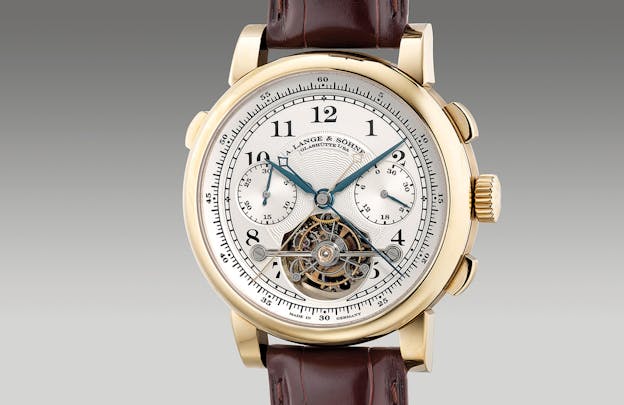
After such a big piece, besides the cosmetic touches, for a long time we did not see anything new from the 1815 Family. In the meantime, the brand was focused on developing other collections such as the Richard Lange, and Zeitwerk, and was trying to give one last breath to the Cabaret. You can learn about the period in context via our A. Lange Story, episodes 4 and 5, on Youtube.
Following the 8 years of silence however, the 1815 Collection marked its return with heavy hitters. Right, both in weight, and complication.
1815 Rattrapante Perpetual Calendar (2013)
In its heyday during the 20th century, A. Lange & Söhne crafted some exceptionally high complications. I am talking about true grand complications that combine a sonnerie, minute repeater, perpetual calendar and rattrapante with exceptional craftsmanship. Although very rarely made (only 9 from the 1900s to the 1930s), some of these pieces grace auction catalogs occasionally, selling at deserving sums.
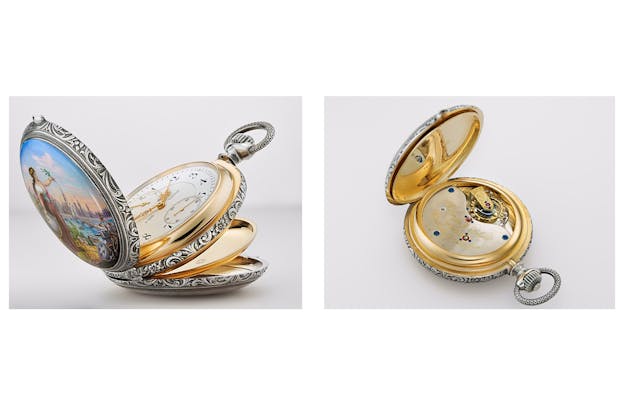
Even today, for a traditional manufacture playing in the high ends of the horology, there are complications that must be delivered. And two of them are surely the perpetual calendar and rattrapante, combined if possible. With such a heritage, it would only make sense for A. Lange & Söhne to revive some of these gems and the product of such ambitions came in 2013 with the 1815 Rattrapante Perpetual Calendar and the Grand Complication (please see more about it at A. Lange Story Episode 6).
The 1815 Rattrapante Perpetual calendar is the first 1815 piece to house a calendar mechanism and the piece does it in a truly traditional A. Lange & Söhne fashion. No windows, no apertures, and as many hands as possible. Seen side by side with a Grand Complication pocket watch, the resemblance is striking.

In a broader context, there is one other reason why Lange introduced such a piece, and that lies in Switzerland: Patek Philippe. Back in 1999, when Peter Chong asked Günter Blümlein about Patek Philippe, his response was as smartly put as one would expect from such a manager: “The main difference between us is simply, ‘Made in Germany’ versus ‘Made in Switzerland.'”
Of course, to fulfill such an ambitious claim, one must put out deserving pieces, and the combination of a perpetual calendar and rattrapante in a traditional layout is an important part of fulfilling the promise. In 2013, there were few others (mostly old-school such as the Audemars Piguet Jules Audemars Grand Complication, or the IWC Da Vinci 3754) but the king of the hill was Patek Philippe’s 5004 and 5204. I believe the introduction of the 1815 Rattrapante Perpetual was partly due to a challenge from the chief rival (which was about $100k more expensive).
On the back, the beating heart caliber l101.1 lacks the depth we are accustomed to from the brand – though this is understandable, in order to keep the thickness at wearable proportions at 14.7 (5204 is at 14.17) mm thickness. The exposed column-wheels are nicely polished, allowing the viewer to observe the working principles of the rattrapante.
With the reference, we enter an era where A. Lange & Söhne became fully focused on high complications (A. Lange Story Episode 7), and 2014 brought another addition to the 1815 collection.
1815 Tourbillon (2014)
Surely one of the most special elements of watchmaking, the tourbillon has been with us for over 200 years. As the technology and the way we utilize watches as precision instruments evolved, the legitimacy of the tourbillon has been questioned from a functionality perspective, but never its beauty. The delicate, finely made parts of the tourbillon, and its constant motion, have kept their fascination throughout centuries, and the tourbillon has always been special.

Over the centuries we saw many variations on the configuration of the tourbillon, but few advances in its basic principles. One question was how to stop the tourbillon while setting the time, in order to allow the watch to be set more precisely. For the first time in history, this came with A. Lange & Söhne’s Cabaret Tourbillon in 2008. Lange devised a mechanism to stop the tourbillon when the crown is pulled and since then, every tourbillon from the brand is equipped with this groundbreaking invention.
In 2014, the 1815 Tourbillon combined this innovation in mechanics with the brand’s signature zero-reset mechanism.

It is a tremendous joy to observe the astonishingly crafted tourbillon cage (inspired from Fridolin Stübner’s constructions during the pocket watch era) gently stop with a pull of the crown, the seconds hand traveling back to zero, and re-start immediately with a push. The cage, made of 84 parts and weighing only 0.25 grams is a work of art, putting on a magnificent show.
On the back, we are greeted with the famous Lange three-quarter plate, this time paired with a cut-out for the tourbillon and a diamond end-stone for the cage.

Overall, an astonishing watch at an incredible value at the pre-owned market, which is often almost half the retail price.
Tourbograph Perpetual (2017)
Introduced in 2017’s SIHH with a lot of fanfare as the fifth installment of the majestic “Pour le Mérite” collection, the Tourbograph Perpetual marks the pinnacle of A. Lange & Söhne’s decade of complications.
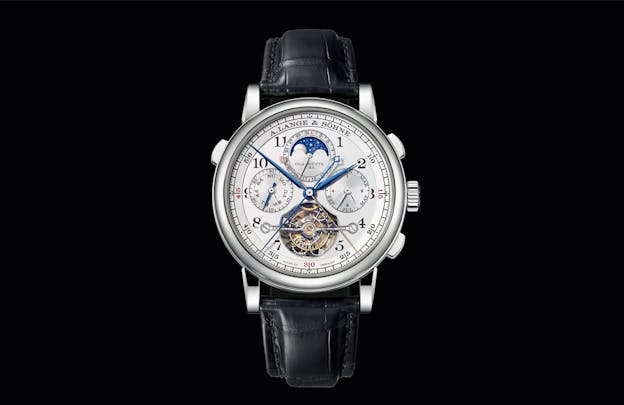
This is a piece of engineering that sounds like the brand wanted to finish the business they started with the Tourbograph in 2005. A wristwatch with a tourbillon, fusée and chain and rattrapante chronograph, this time with another historic grand complication, the perpetual calendar, on top.
The most striking element of the extremely complex dial is of course the tourbillon, with an interesting twist: It is buried deep within the dial, held by a deliciously curved, black polished bridge. As intriguing as it looks, the cause is the thick perpetual calendar module added on top of the Tourbograph’s caliber from 2005. Indeed, both pieces share the same base, which is evident with the identical look from behind.
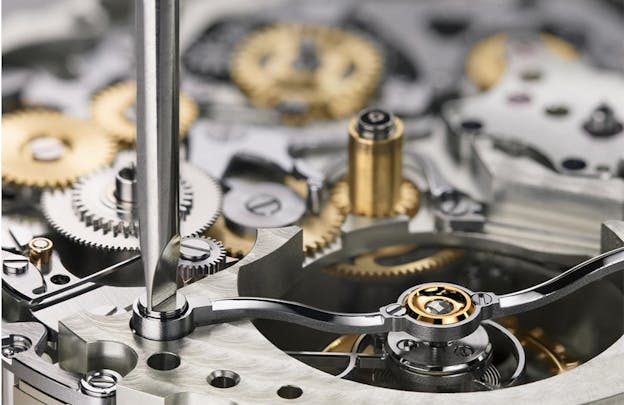
My pet-peeve with this astonishing piece is that, unfortunately, it is perhaps a bit too much. It is everything on top, on top, on top of each other, sacrificing from the basic notion of a wristwatch: its wearability. For sure, it is possibly the crown-jewel of any Lange collection (excluding the 6 people who own the Grand Complication) however, it is perhaps better enjoyed as a table clock with its 16.6 mm thickness.
1815 Annual Calendar (2017 -)
Next to the inimitable Tourbograph Perpetual, in 2017, the 1815 family also had one foot back on earth with the incredibly charming, first stand-alone calendar reference of the family: the 1815 Annual Calendar. Following many heavy hitters one after the other, we can see this reference as the brand’s willingness to cater a different clientele who is looking for an affordable complication both from the 1815 family and the brand.
Fashioned in an elegant 40 mm gold case with 10.1 mm thickness with a polished domed bezel, the 1815 Annual Calendar brings a completely symmetrical layout and does it in the best way possible. Adhering all the hallmarks of the 1815 collection and elevating them with the fantastic blue of its Moonphase, legible sub-dials, blued steel hands and the eye-pleasing typography.
On the back, a classic 1815 caliber is spiced with exposed ratchet-wheels, finished with sunray technique.
There’s one other piece introduced in 2017. For emotional reasons, it is surely the most important and meaningful of the collection, and perhaps the whole A. Lange & Söhne family.
The “Homage to Walter Lange”
I know that, as a man who had the chance to spend only a few precious minutes with Walter Lange, my words would be nothing but hearsay, and nothing close to someone who worked beside him, and who with him, revived the brand. Therefore, to understand both the watch and the man, I turn to Günter Blümlein with a quote from his interview with Peter Chong:
“Mr. Lange is the ‘father figure’ for our personnel. His personal integrity and fine character create some sort of emotional parenthesis for all of our employees … Finally, Mr. Lange is just an outstanding expert of watch-making, resulting in his strong impetus in major decisions which concern for instance product development. To us Mr. Walter Lange is the living ‘bridge’ to the past of A. Lange & Söhne in terms of movements, quality, traditional manufacturing or many other matters.”
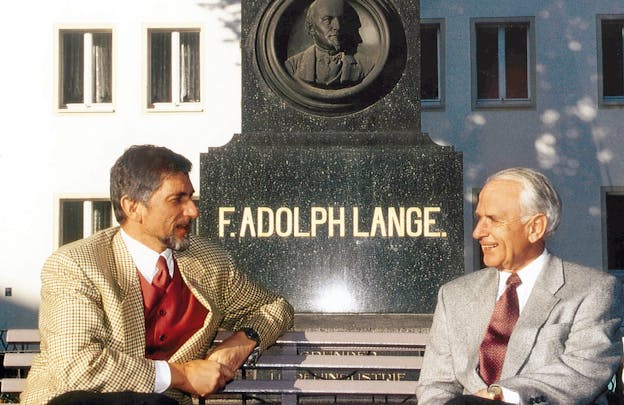
Walter Lange and Günter Blümlein in front of F. Adolph Lange’s statue in Glashütte. Credit Lange Uhren GMBH
This monumental figure passed in 2017, at the age of 93 and as an homage to him, A. Lange & Söhne crafted “Homage to Walter Lange,” in December 2017.
Walter Lange was 66 years old when A. Lange & Söhne was re-registered at the state office in Dippoldiswalde. An age where most people would seek retirement, he came forward with Mr. Blümlein to revive his family name once again (full story, here). As a gentleman who has such high regard and care for his predecessors, Walter Lange had one wish from the product developers at the brand: To utilize a special jumping seconds invention by Ferdinand Adolph Lange in 1867, and a patent acquired by Richard Lange in 1877.
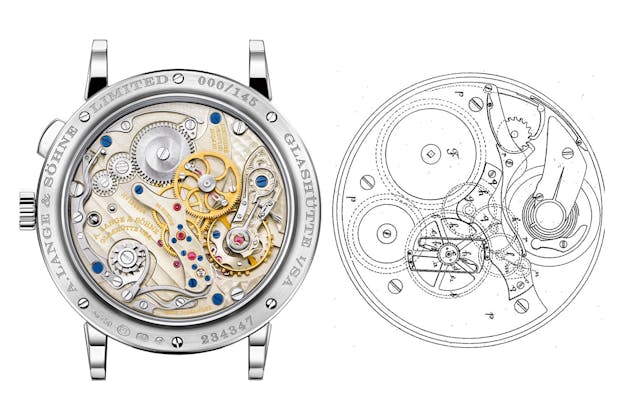
Though it is bitter-sweet that Mr. Lange never saw his wish realized, the brand created the caliber L1924 (Mr. Lange’s birth year) in a span of 9 months, based on the brilliant pocket watch mechanism. “Homage to Walter Lange” was introduced in yellow gold, pink gold, white gold. A cherry on top, is that A. Lange & Söhne crafted a unique stainless steel piece with a striking black enamel dial. The piece was auctioned by Phillips’ Watches, totaling for CHF 852,000, all proceeds going to Children Action charity, which the late Mr. Lange was very fond of.
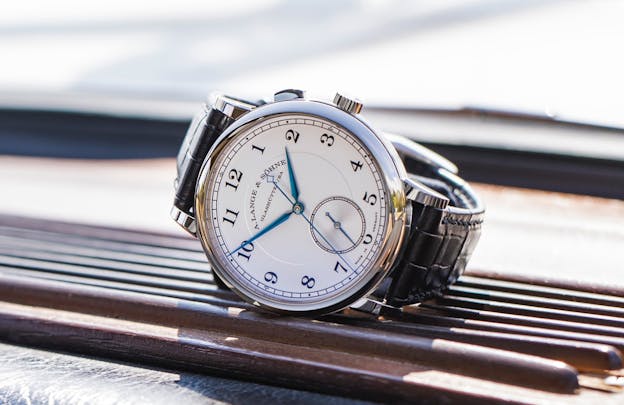
To me, Homage to Walter Lange is surely the most meaningful collection that ever left Glashütte. A source of pride and joy not only to any serious A. Lange & Söhne collector but any watch enthusiast.
1815 Rattrapante (2020 -)
Anniversary pieces have always been very special at A. Lange & Söhne. A trip down the memory line, we see the Langematik Anniversary for the 10th year of the modern brand, 1815 Moonphase for Emil Lange’s 150th birth year, the Lange 1 in honey gold for the collection’s 20th Anniversary, etc.. Indeed, there was a period where the special editions from the brand stalled a bit, but in 2020, it made a return with a full force with the 175th Anniversary collection and despite the presence of the Tourbograph Perpetual in honey gold, the 1815 Rattrapante was the jewel of the trio.
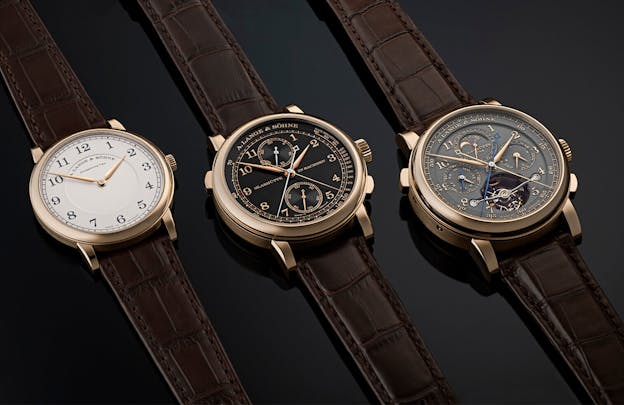
The 1815 Rattrapante was introduced with an exquisite combination, the honey gold case paired with black dial and golden letterings. The harmony between the pale gold and full black is magnificent.

The sub-dial placement and the size are very well done, they do not cut into the numerals. The German inscription “GLASHÜTTE IN SACHSEN” is a brilliant use of the space, and it further boasts the identity of the 1815 collection with a nod to early pocket watches of the brand.
The 1815 Rattrapante utilizes the caliber L101.1 (1815 Rattrapante Perpetual Calendar), minus the perpetual calendar module, which you can also tell from the placements of the chronograph minute totalizer and the small seconds sub-dials. Removal of the module makes the piece much more wearable. To further increase the wearability, the levers and bridges are made flatter. Even though such arrangement sacrifices some of the three-dimensionality that we’re accustomed to from Lange chronographs, it is a clever twist, as this complicated piece is just 12.6 mm in thickness.
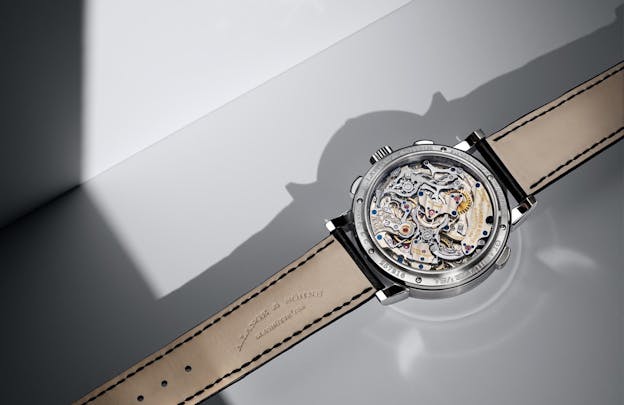
In 2022, A. Lange & Söhne expanded the collection with the introduction of the platinum variant, limited to 200 pieces – which is a big series both for the brand, and for the complication.
Final Thoughts
Despite the superstars such as the Lange 1, Datograph, and the Zeitwerk, as we can see from the variety and the importance given to the collection, the 1815 family is the backbone of A. Lange & Söhne’s identity.
If one is in the market for a very-well-made time-only piece, or a chronograph, or something in between like the Annual Calendar, or Up/Down, I think that the 1815 collection offers tremendous value both within A. Lange & Söhne catalog, and overall in the market with its identity, looks, and craft.
Frankly, in the super-complicated range, at retail price level, my choice would differ from A. Lange & Söhne. However, in the secondary market, the value is unbeatable. 1815 Tourbillon in gold is around $100k, and the 1815 Rattrapante Perpetual Calendar is around $150k depending on the metal, offering tremendous bargains for those who can see that Lange is more than Odysseus, or early Lange 1s, and Datographs.
It is going to be interesting to see how this line evolves over the coming years, but I expect more stand-alone complications like the 1815 Rattrapante, rather than cocktails of complications. An 1815 Perpetual Calendar, or an 1815 Sonnerie would be nice, wouldn’t it? Whatever is coming, I have full trust that it is going to be very enticing.
Looking to sell your A Lange & Söhne? Submit it to The 1916 Company for a free quote.

